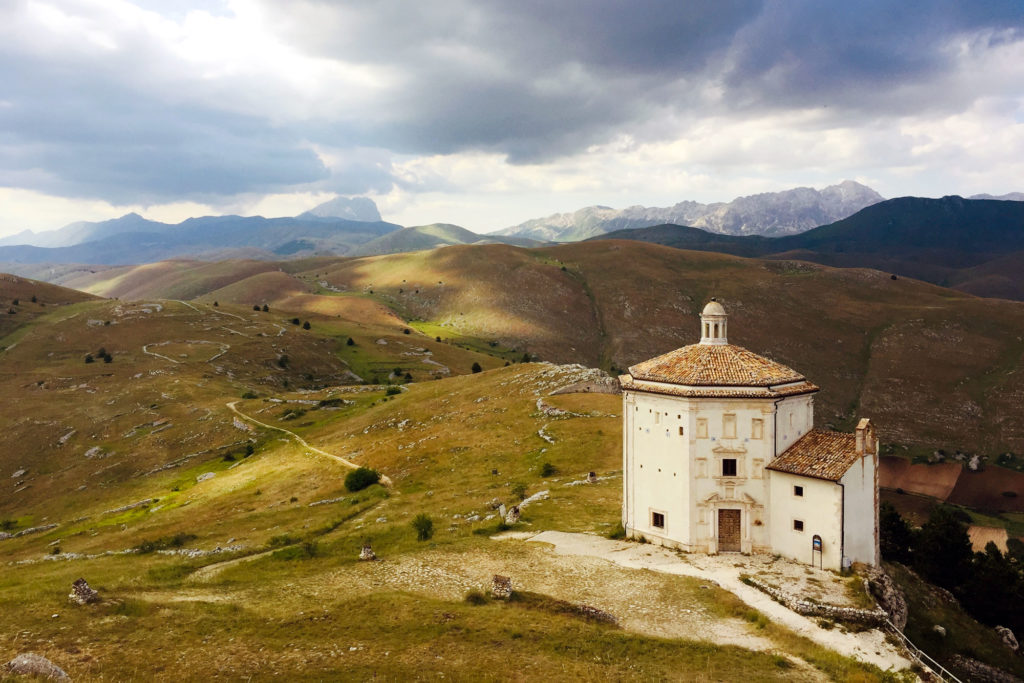
Centrally located and culturally southern, Abruzzo was the backdrop of my childhood summers and weekend escapes while living in Rome. It is one of the greenest regions in Europe with wild, untouched terrain. Half of Abruzzo consists of natural parks and nature reserves. With its hearty cuisine and folk traditions, there’s a lot to explore in these ancient lands.
In a single day, you can enjoy swimming in the crystal blue waters of the Adriatic Sea before taking in sweeping views from the Apennine mountains at sunset. Abruzzo has something for everyone and I promise it will leave a lasting impression. Here are 8 experiences you cannot miss.
1. Spend a Day in the Medieval Village of Pacentro
Like much of Italy, Abruzzo is home to enchanting medieval villages speckled throughout the countryside. Pacentro is one of my favorites! It’s considered to be one of the most beautiful villages in Italy–one of the Borghi Piu Belli d’Italia. Additionally, Pacentro is located in the Maiella National Park in the province of L’Aquila. This gorgeous village is filled with Baroque, Renaissance, and Medieval architecture. And, the incredible 14th-century Castello Caldora dominates the skyline.
During a stroll through town, you can find locals enjoying their café in the piazza, and laundry hanging in small streets with the Maiella mountains peeking through. You can also find scenic spots for an aperitivo accompanied by spectacular sunsets over the Peligna Valley. End your day with dinner on the terrace of Taverna de li Caldora. This award-winning, Slow Food restaurant features traditional Abruzzese cuisine like hand-rolled spaghetti with saffron and truffles, and thin strips of braised veal with marinated vegetables. A meal here is the chef’s kiss on a perfect day.
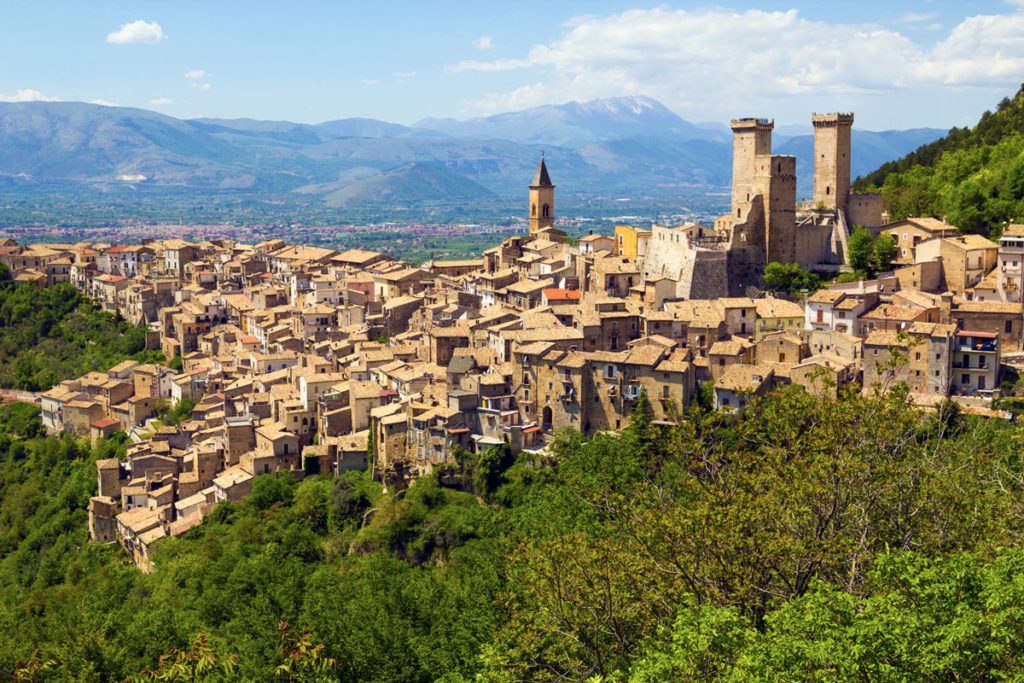
2. Shop for Confetti in Sulmona
The nearby medieval city of Sulmona is the shining star of confetti production in Italy. These small, almond candies are coated in a thick sugar glaze and come in an assortment of colors and flavors. The original candy is naturally vegan and gluten-free. And, they are generally gifted at weddings, baptisms, and other important family events. Actually, the English word confetti originates from this delicious Italian tradition!
Known as la città dei confetti, Sulmona has become a city that is more than the birthplace of the Latin poet, Ovid. When you visit the city, wander down Corso Ovidio, and admire the well-preserved medieval aqueduct along the path, before finding the street dotted with little craft shops and cafes selling an assortment of colorful confetti. Confetti Pelino dates back to 1783 and is the oldest shop in town. Its museum displays old-fashioned confectionery machines and memorabilia. It’s a great way to learn more about the ancient Sulmonese art of candy confection.
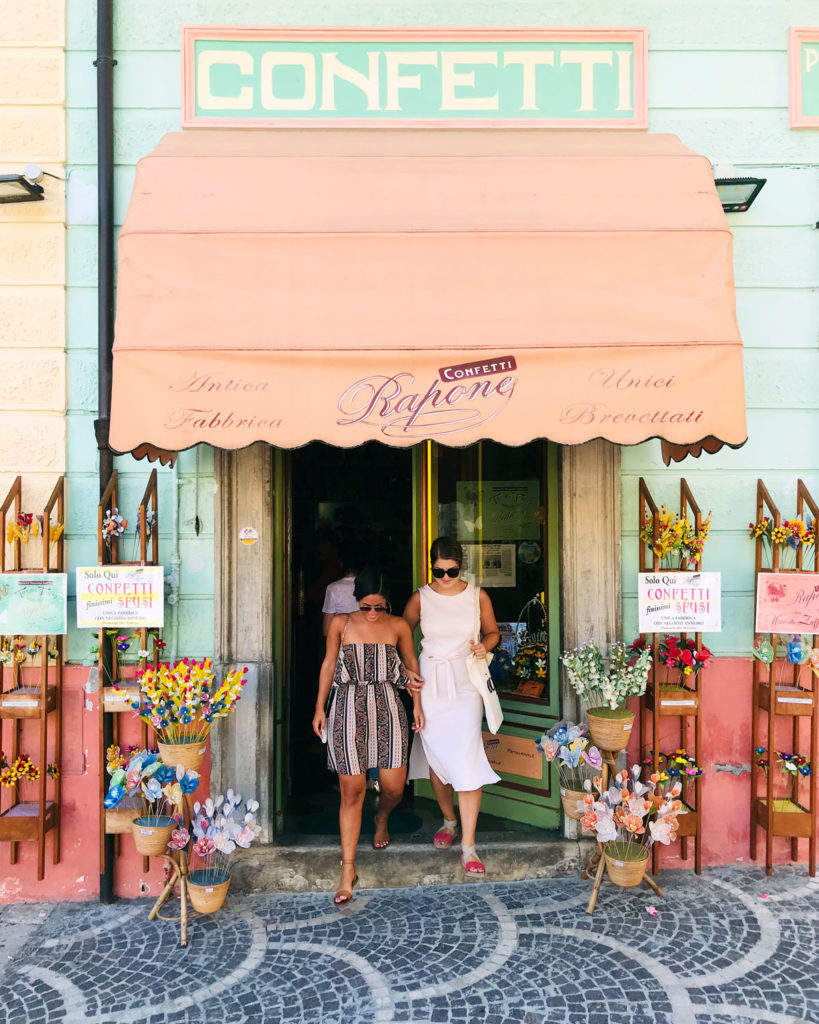

3. Take in the Views at Rocca Calascio
One of my favorite places to spend an afternoon is Rocca Calascio. It is located within the Gran Sasso e Monti della Laga National Park, the highest mountain range in Italy after the Dolomites. Rocca Calascio is a fortress that rises nearly 1,500 meters (5,000 feet). It was built during the 10th century as a watchtower of a military facility, before being destroyed by an earthquake in 1703. The small community that lived below the fortress walls fled to the nearby town of Calascio. The fortress has been a beautiful, but empty ruin, ever since.
Today, the site has become a playground for photographers and nature enthusiasts, alike. The park is one of the most biologically diverse areas in Europe. And, a visit to this fortress will afford you a clear view of the highest peak in the Apennine Mountains, Corno Grande.
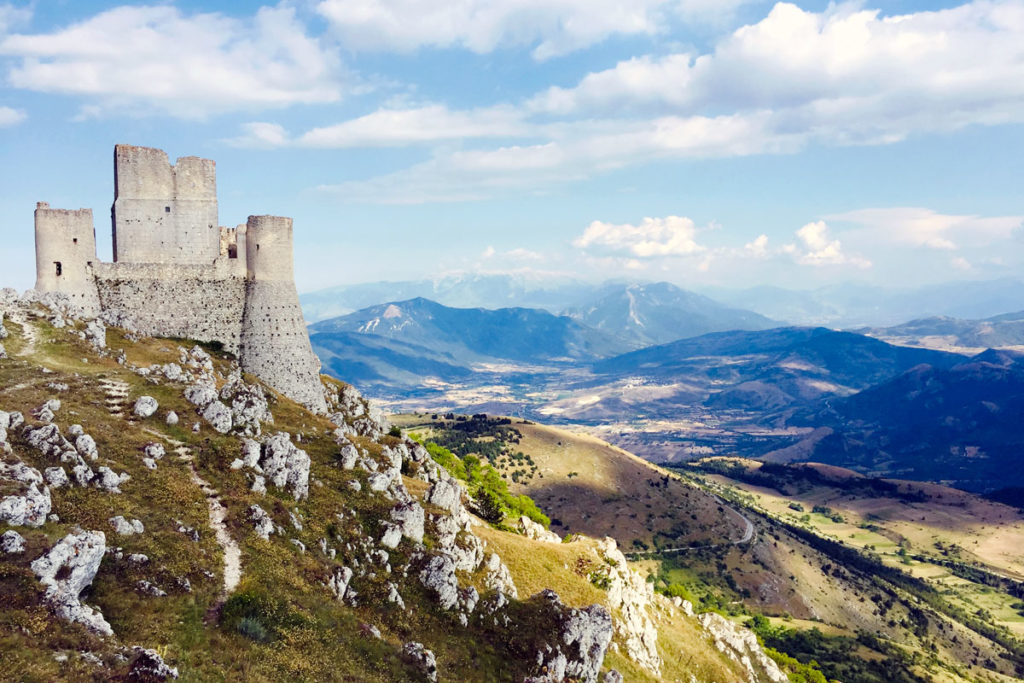
4. Stay at Sextanio Albergo Diffuso
Santo Stefano in Sessanio is one of Abruzzo’s most beautiful villages. It is a classic example of a medieval Italian hilltop town and home to one of the most unique lodgings in all of Italy—an albergo diffuso, or “scattered hotel.” The modernization of rural Italy birthed this innovative hospitality concept as a way of reviving small historic towns and villages, offering an unparalleled travel experience.
The Sextantio Albergo Diffuso features bedrooms and apartments located in historic buildings scattered throughout the formerly abandoned village. It’s the sister property to the Sextantio’s cave hotel in Matera. And it’s the perfect choice for those interested in ancient architecture and immersing themselves in local culture. The décor is stunning, with wooden ceilings, antique fireplaces, and freestanding bathtubs. The restaurant, Locanda sotto gli Archi, serves a terrific range of dishes inspired by local centuries-old recipes. Everything is made using native ingredients grown in the neighboring fields.
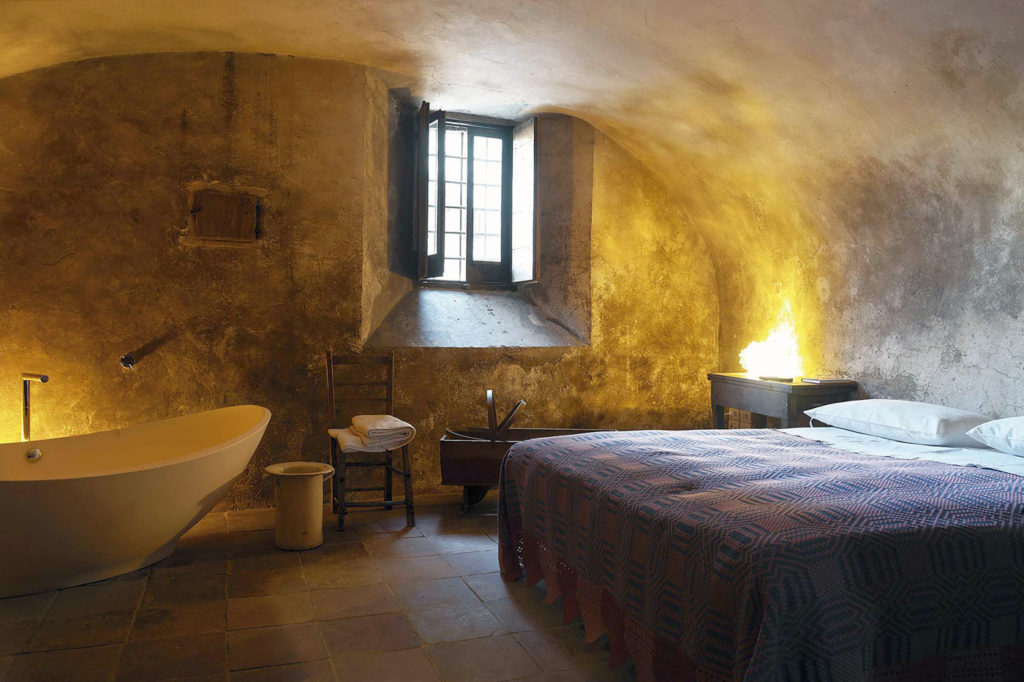
5. Taste the Local Specialties
No trip to Abruzzo is complete without eating your weight in arrosticini. These tender lamb skewers are typically cooked over an open fire, sprinkled with a bit of salt, and served with slices of bread drizzled with extra virgin olive oil. Whether you’re roasting arrosticini at someone’s home or al fresco in the mountains, you’ll notice the charcoal-burning canale. This is a specially designed barbecue that looks like a narrow gutter. Here, the meat is placed in a straight line above the coals to ensure even cooking. I can promise you that the smell and sizzle of freshly-cooked arrosticini is reason enough to keep you coming back to the region.
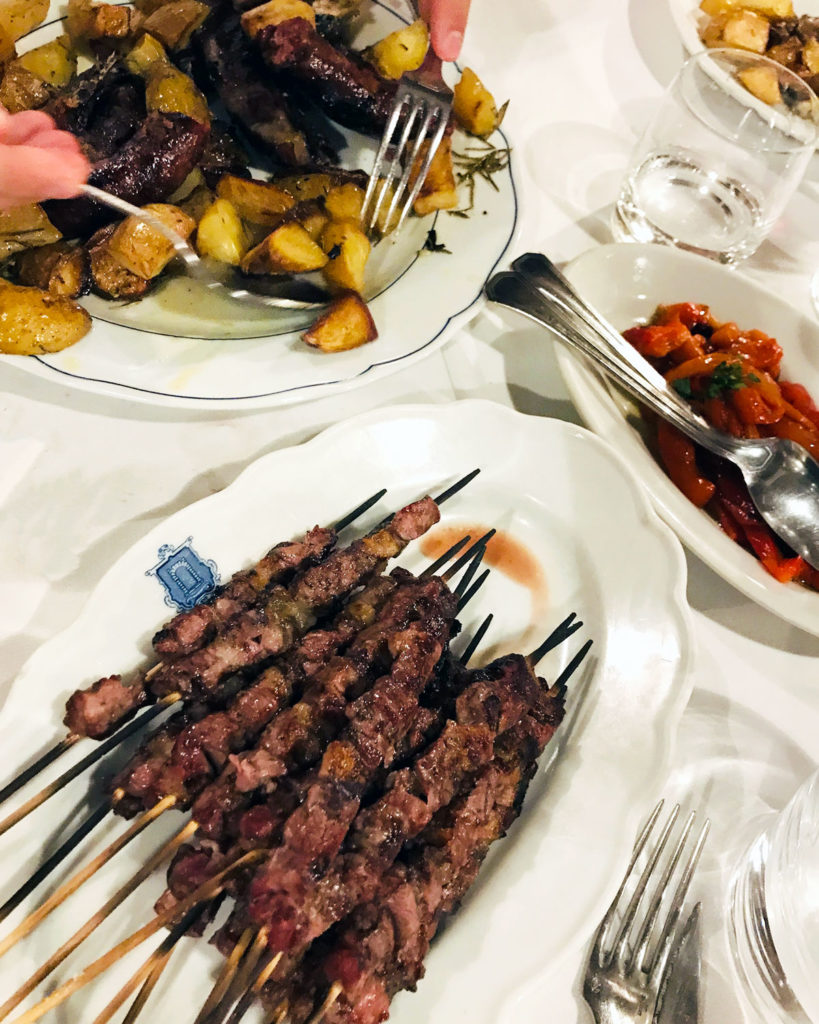
6. Hike to the Hermitage Site of San Bartolomeo in Legio
Carved into the side of a mountain, the Eremo di San Bartolomeo in Legio is a beautiful hermitage located near the town of Roccamorice in the province of Pescara. The hermit Pietro Angelerio dal Morrone, later Pope Celestino V, built this picturesque site around 1250. It takes about 40 minutes to reach the hermitage. Once there, you can admire its eye-catching ancient frescoes, weathered over the centuries. You’ll also find a statue of San Bartolomeo holding a knife, symbolizing his martyrdom.
Hundreds of pilgrims form a procession to carry the statue of the saint down to Roccamorice, every year on August 25th. The statue remains in the city for a month before returning to the hermitage. This ancient ritual is linked to the healing power of a small spring of water that flows into town from the hermitage. The locals believe that this miraculous water can heal wounds, diseases, and other ailments.
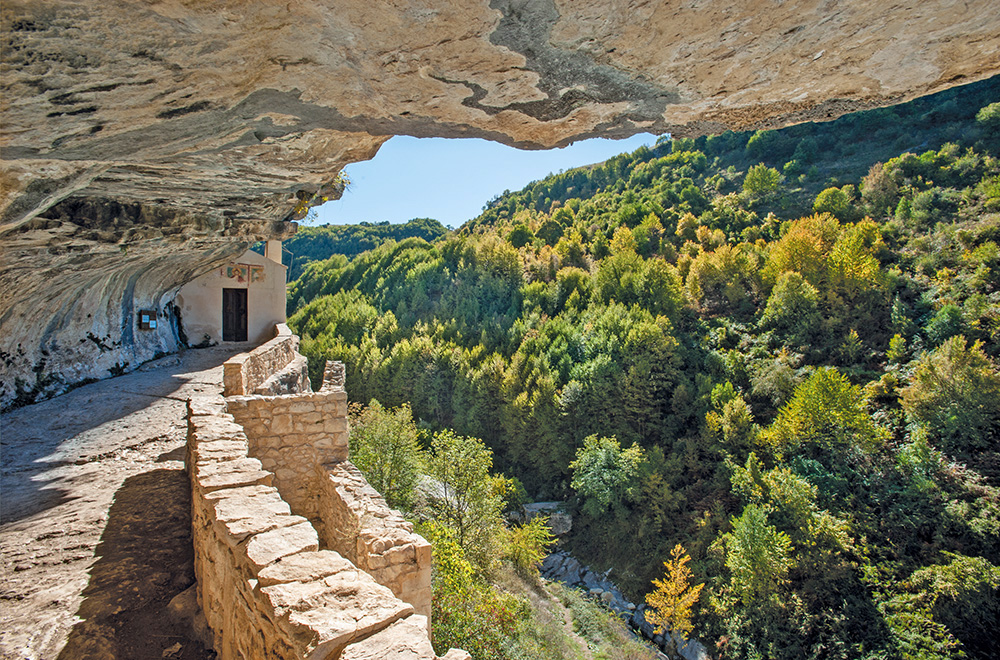
7. Relax at Lago di Scanno
An enchanting village immortalized by Henri Cartier-Bresson and Mario Giacomelli, Scanno is a photographer’s paradise. The lake is also one of the few places left in Italy where women still dress in their traditional costumes. This majestic, heart-shaped lake is the largest in Abruzzo and one of the rare natural lakes in the region. Designated as a “blue flag” beach for its clear water, it attracts many swimmers and sunbathers during the summer months.
Surrounded by numerous mountain trails, you can take a break from the sun and walk along the Path of the Heart to reach the most beautiful, panoramic point above the lake in under an hour. Of all the beautiful natural and artistic sites in the region, the Lago di Scanno is one you certainly can’t miss.
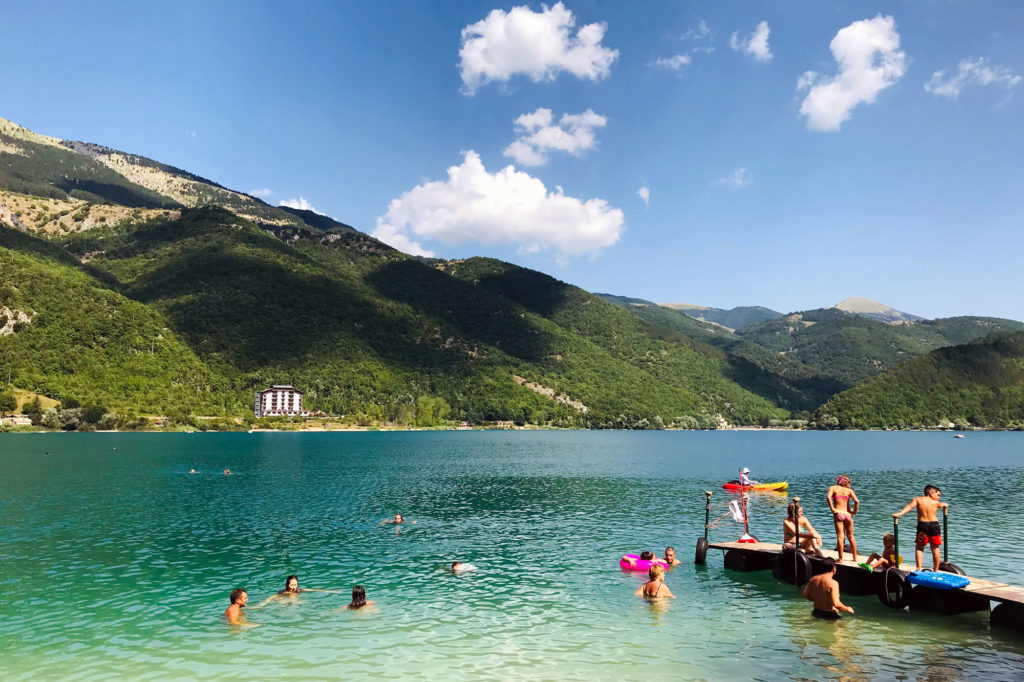
8. Dine Above the Adriatic Sea on a Trabocco
While you’re in Abruzzo, you can’t miss spending some time along the sea on the picturesque Costa dei Trabocchi. This coastline stretches for over 40 kilometers, from Ortona to Vasto. Fishing platforms line the coastline, built above the lapping waves of the Adriatic. These trabocchi are typical of the coastal landscape, and you can find them in northern Puglia as well.
Trabocchi were built to feed and support multiple families, and are now a cultural symbol. Many have been transformed into restaurants that serve the freshest seafood, as well as other local delicacies. Two of my favorite trabocchi-turned-restaurants are Punta Tufano and Punta Isolata. For those who love frutti di mare, dining above the crashing waves with a side of sea breeze is an unforgettable experience.
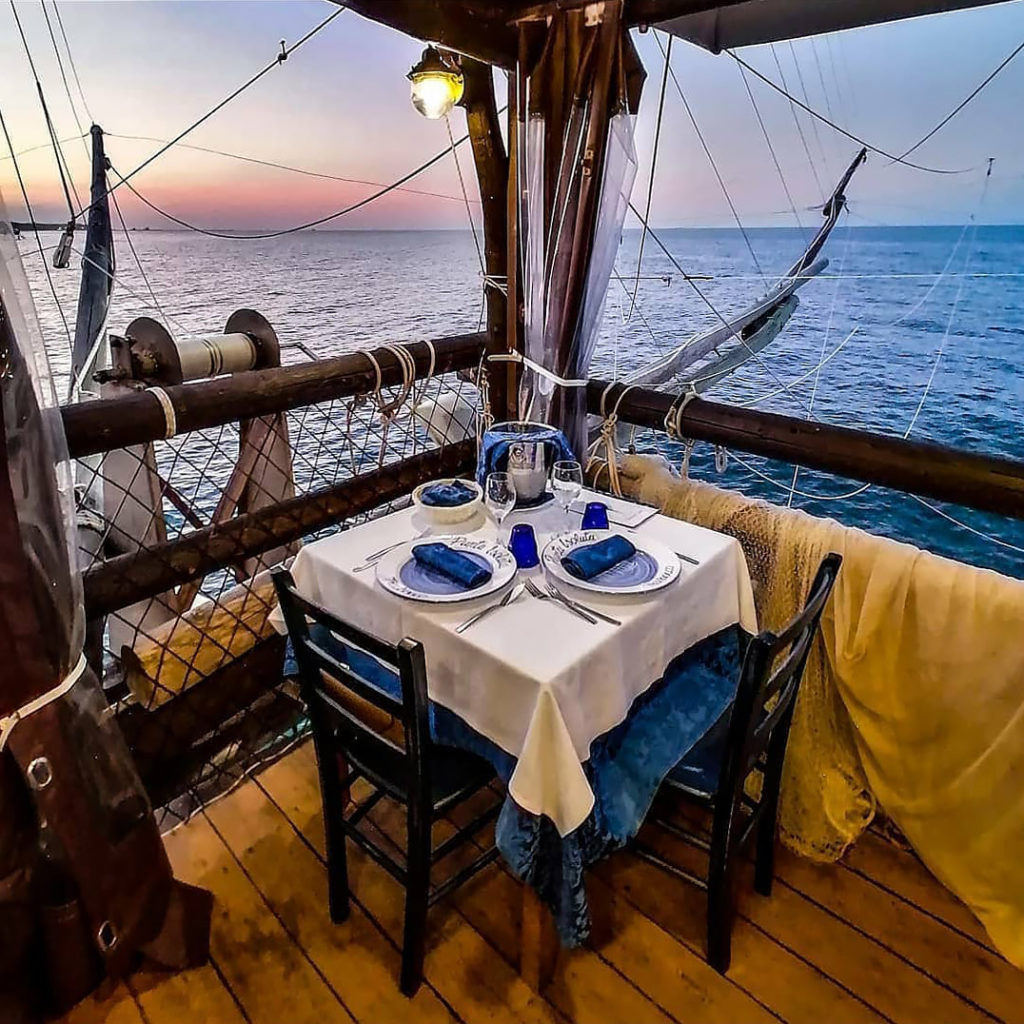
Renting A Car In Italy
Discover Cars is our favorite platform to rent a car in Italy. It lets you search, compare, and save up to 70% on your rental — with 24/7 support and free cancellation.


